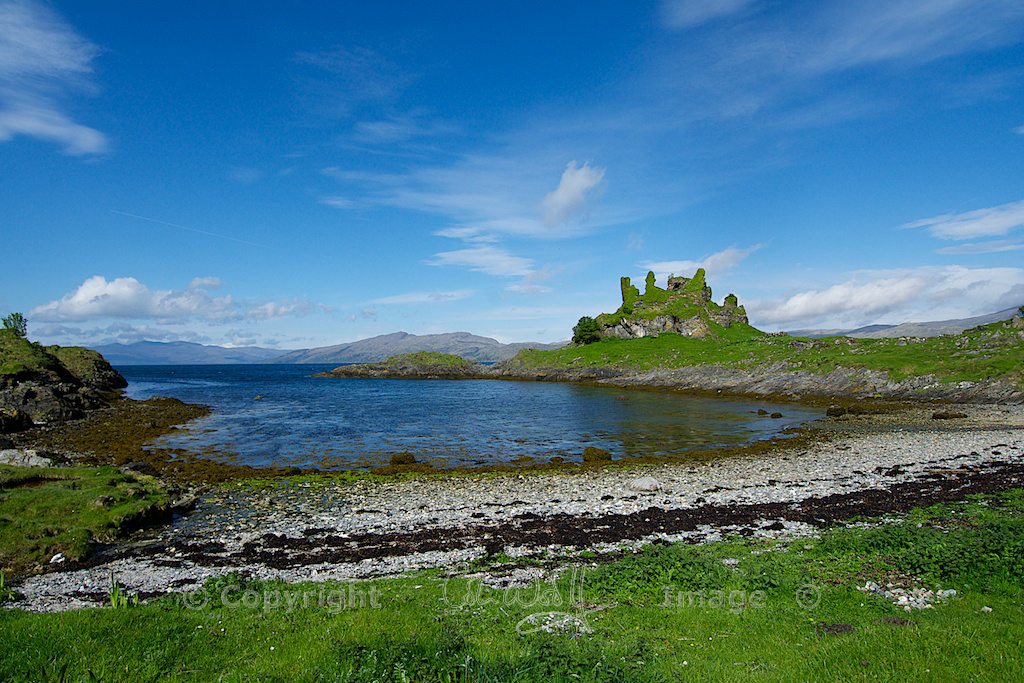
Castle Coeffin: guarding a broken heart
The ruins of Castle Coeffin stand on the western shore of Lismore, a low-lying island in the Firth of Lorn. To get there, you have to walk a mile or so across fields that are bordered with stone walls, and if you’re blessed with good weather you will have far-reaching views over to the mountains of Morvern. The castle comes into view as you descend a stony track, rising in the distance on a coastal promontory, its ragged walls almost entirely smothered in ivy. It seems to have grown out of the landscape.
Below the castle crag, the waves curl gently into a shallow bay where beds of yellow flag iris and marsh marigolds are fed by clear-running streams. In May, which was when we visited, the grass is jewelled with bluebells, early purple orchids, bird’s foot trefoil and sky-blue speedwells.
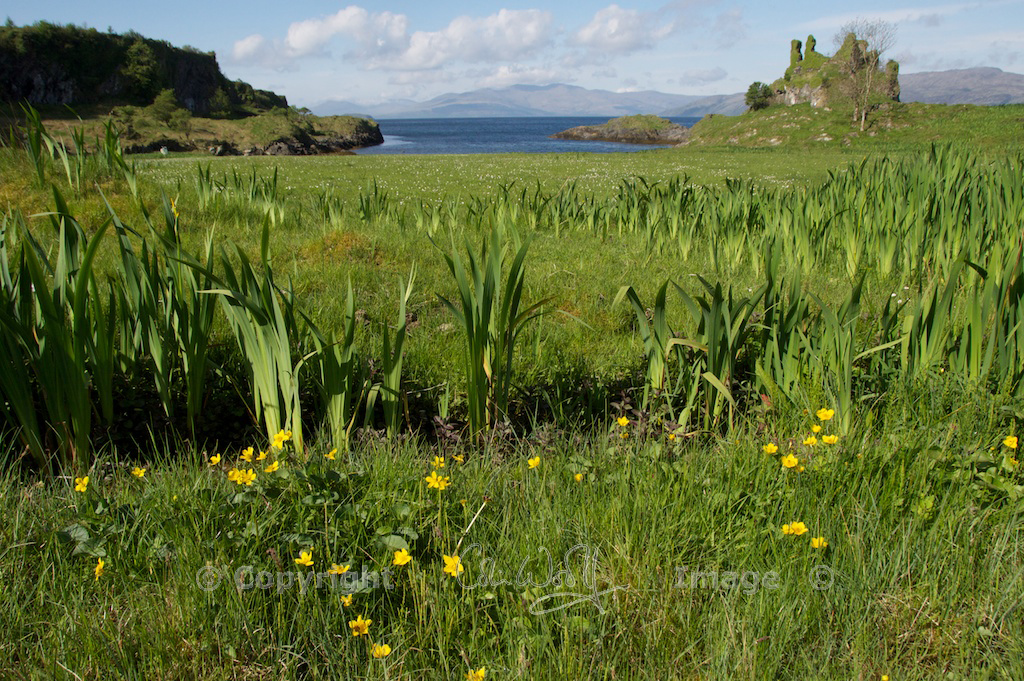 A quick scramble up the steep slope and you’re standing within the castle walls. The stonework is still impressive: huge blocks of pinkish granite, with smaller flat slabs wedged in layers between them. Grass and thrift cover almost every surface, and a small hazel tree sprouts rakishly above a doorway. Primroses speckle the grass, and land snails feast on the lush carpet; even if you’re enchanted by the scenery, it pays to watch where you put your feet!
A quick scramble up the steep slope and you’re standing within the castle walls. The stonework is still impressive: huge blocks of pinkish granite, with smaller flat slabs wedged in layers between them. Grass and thrift cover almost every surface, and a small hazel tree sprouts rakishly above a doorway. Primroses speckle the grass, and land snails feast on the lush carpet; even if you’re enchanted by the scenery, it pays to watch where you put your feet!
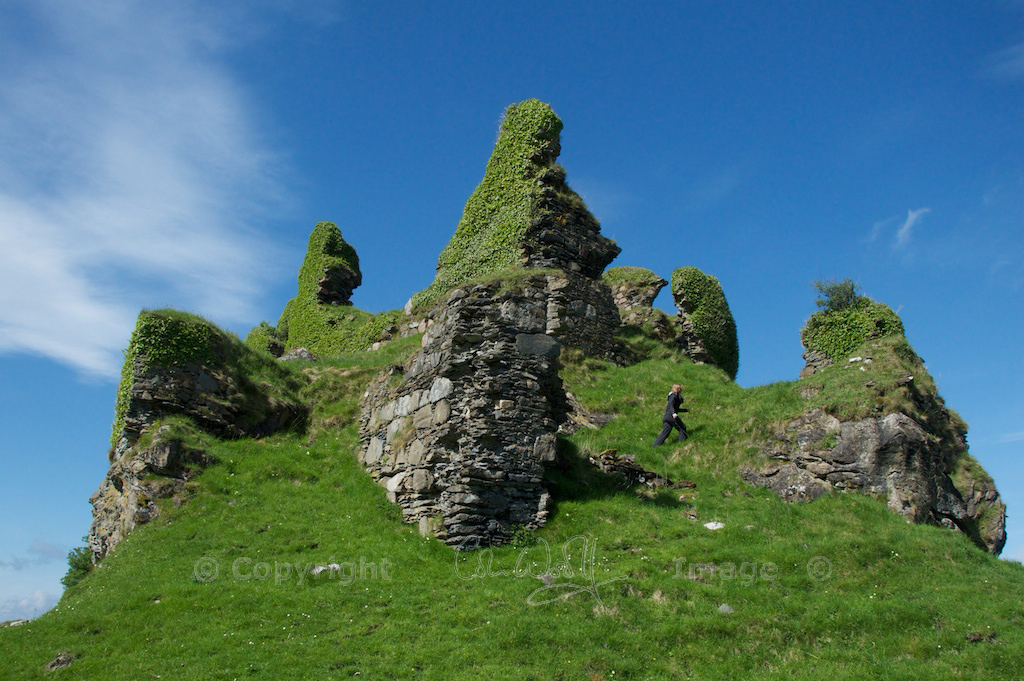
 So what went on here, in this windblown, deserted, ridiculously romantic haven of a place?
So what went on here, in this windblown, deserted, ridiculously romantic haven of a place?
History tells us that Somerled, the 12th century Gaelic-Norse warrior whose bravery has made him half-legend, half-man, divided his kingdom between his three sons. The eldest, Dubgall or Dougall, received lands in north and mid-Argyll, as well as the islands of Mull, Tiree, Coll and Lismore. From him sprang the clan MacDougall. (His younger brother, Ranald, received Kintyre, Islay, Jura and Colonsay, while a third, Angus, inherited land in Ardnamurchan and north-west Scotland).
After Castle Sween, which was the first stone-built castle of its kind in Scotland, a rash of new fortresses began to arise between 1200 and 1250. In structure these resembled the formidable castles favoured by the Normans, with massive curtain walls protecting a square tower within; and among them was Castle Coeffin. Built by the MacDougalls of Lorne, it was situated conveniently close to the ancient cathedral of St Moluag. Some sources say that the hilltop site was already a Viking fortress, and although this is not mentioned by the RCAHMS (Scotland’s authority on ancient monuments), it looks to be an ideal spot for such a stronghold.

 And there’s another reason why I’d love the Viking connection to be true: a legend, which varies a little from source to source, but whose story is spellbinding. This is a quote from ‘Journeying in MacDougall Country’ by Walter Marshall MacDougall:
And there’s another reason why I’d love the Viking connection to be true: a legend, which varies a little from source to source, but whose story is spellbinding. This is a quote from ‘Journeying in MacDougall Country’ by Walter Marshall MacDougall:
“In the days when Coeffin was a Norse stronghold, Beothail of the golden hair lived there. She was very much in love with a young Viking warrior. When in far-off Lochlann [Norway] this warrior was killed, Beothail grew pale with her grief and died.
Then in the wind that buffeted the walls of Coeffin came the pleading voice of the dead maiden begging her father and brother (whose name, by the way, was Caiffen or Coeffin) to carry her bones to Lochlann. Finally, her bones were washed in the sacred spring of Saint Moluag (still called Tobar Cnamh Beothail, “Well of Beothail’s Bones”) at Clachan and, thus blessed, were carried to where Beothail’s lover lay buried.
Still the voice came upon the ceaseless winds of the Lynn of Morvern. A bone was missing, left behind in the well. A search was made, and the bone was found. It too was carried to Lochlann. Then the pleading ceased, though the restless winds often sound a maiden’s sigh around the walls of Coeffin.”
The last paragraph is so strangely true, because as I stood in the walls all I could hear was the breeze as it passed in waves over the ivy leaves, making a silken whisper like someone sighing. Occasionally a yellowed leaf would fall silently at my feet.
Today few discernible features remain, and it needs a certain amount of imagination to picture the castle as it was. It would have consisted of a hall-house, oblong in plan, its walls almost eight feet thick. An irregularly-shaped bailey, itself surrounded by a wall, protected the main entrance.
The RCAHMS says:
“The principal doorway was situated in the NE wall and was probably approached from the bailey by an outside stairway. A second doorway, which contains a draw-bar socket, was located in the SW and gave access to the shore. A third doorway, probably used as a hoisting-door for stores, was situated in the centre of the NW wall.”
Archaeologists have discovered the remnants of a fish trap below the walls, along with a small quay; the bay had apparently been cleared to make boat access easier. I didn’t see evidence of this, but I wouldn’t necessarily have known what I was looking at.
The castle changed hands several times before passing to Sir Colin Campbell of Glen Orchy. Despite its strategic situation with a well-sheltered anchorage below, it seems to have stood derelict for many centuries. The RCAHMS considers that “…there is no evidence to suggest it was occupied in post-medieval times.” Perhaps we should be glad of that.
On this gloriously sunny morning there was a feeling of quiet seclusion, with a sense of something I could see but not touch; I’d like to go back there on a day of soft rain and enveloping mist, just to see whether the veil was thinner. (That sounds like a romantic daydream, but I’m sure you know my weaknesses by now!)
Sources:
- Royal Commission on the Ancient and Historical Monuments of Scotland
- ‘Journeying in MacDougall Country‘ (Walter Marshall MacDougall)
- ‘A History of Clan Campbell: From Origins to Flodden‘ Vol. 1 (Alastair Campbell)
- ‘Argyll – Land of Blood and Beauty‘ (Mary McGrigor)
Photos copyright © Colin & Jo Woolf
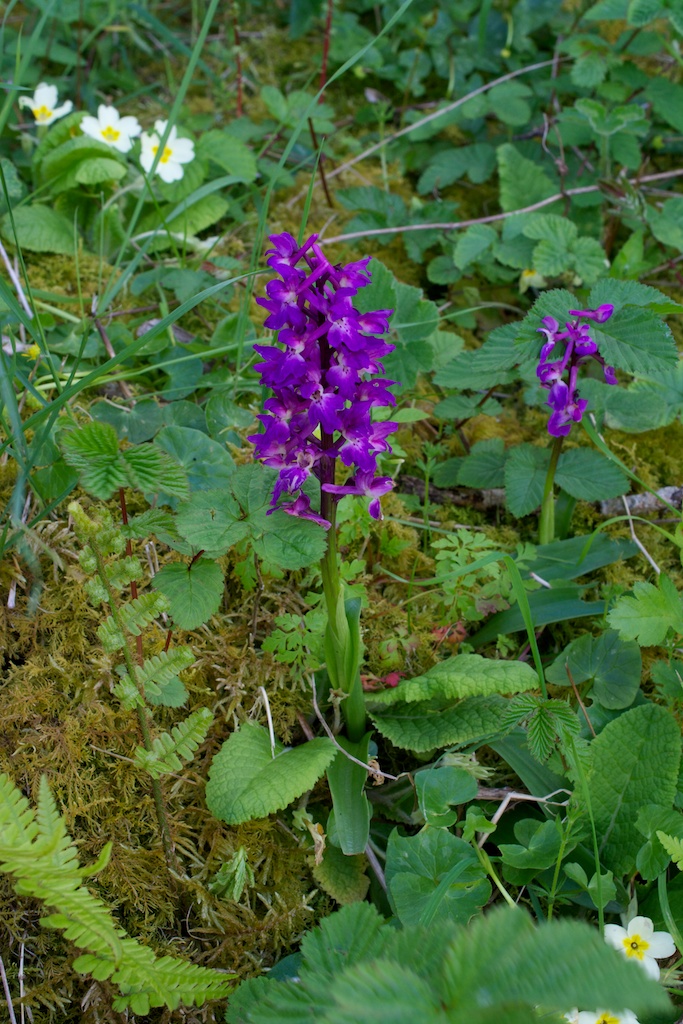
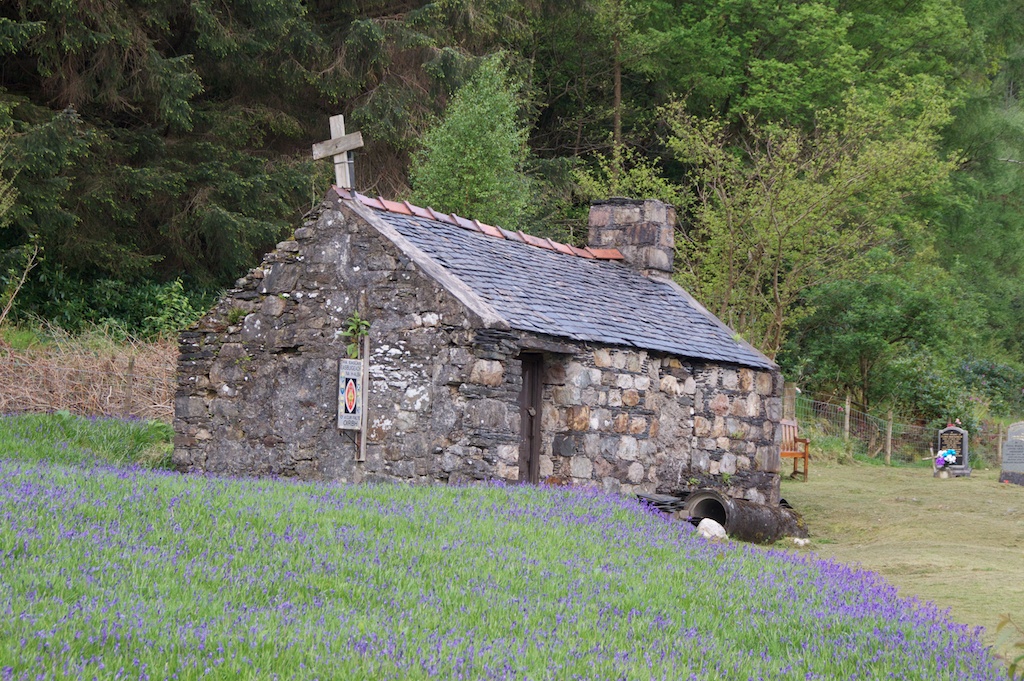



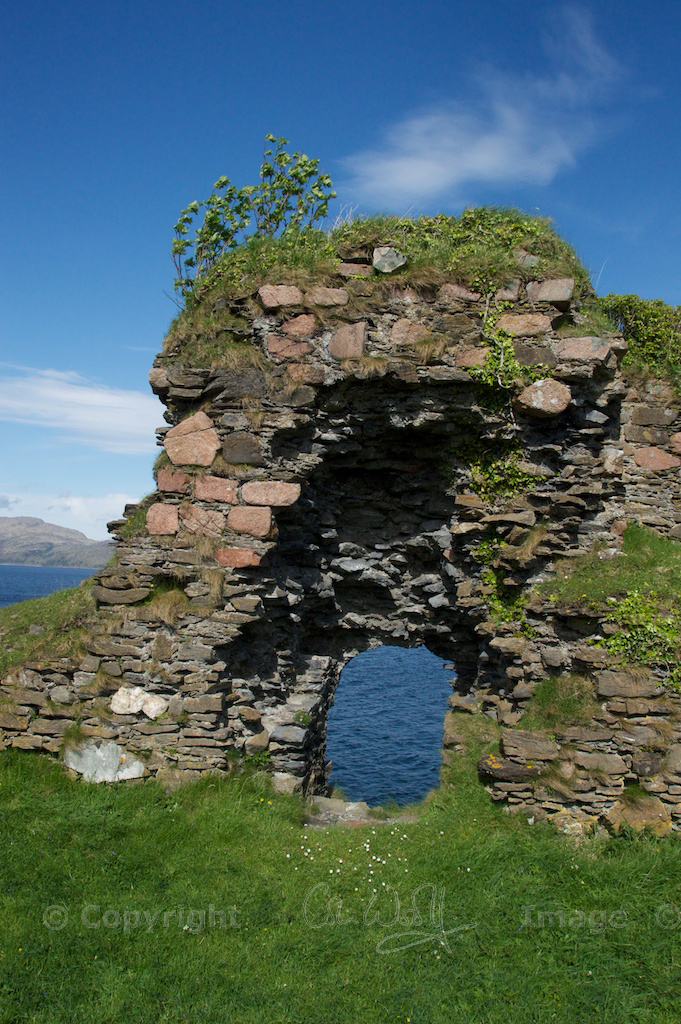


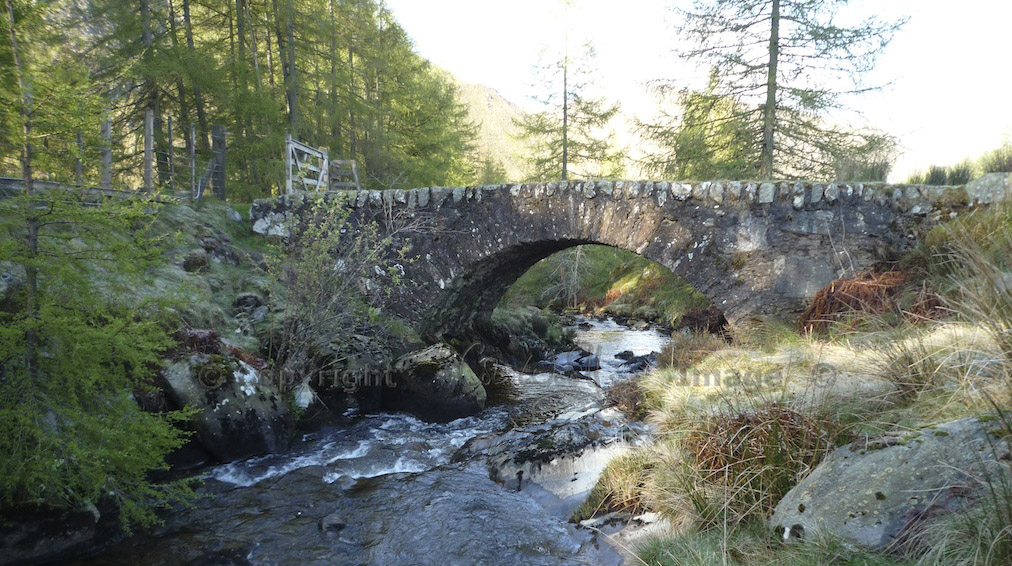
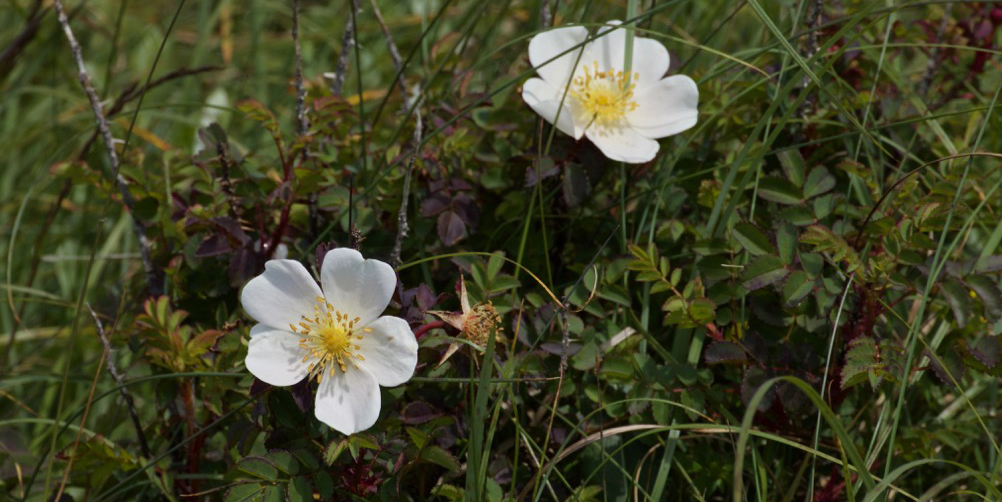
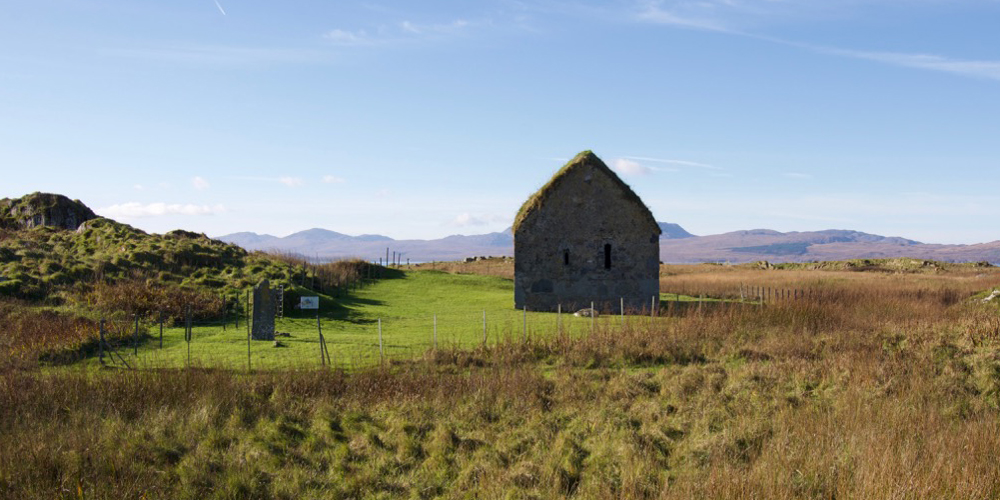
28 Comments
Rachel
Wonderful tale – in some places you can easily believe the legends. It looks so beautiful.
Jo Woolf
It really is, Rachel, an enchanting place! 🙂
blosslyn
Beautiful photos and history, and I love the story of Beothail, I will have to visit and see if I can hear the sigh 🙂
Jo Woolf
Thank you! I love the story too, and I think you will love Lismore! 🙂
tearoomdelights
A magnificent post full of glorious photographs. I feel as if I’ve had a spell cast on me. I hope you will return in the mist some time and report back, because I’d love to know if the veil is thinner in spooky weather.
Jo Woolf
Thank you very much, Lorna, and I’m glad you fell under its spell! 🙂 I wasn’t prepared for such a lovely castle, and in such a wonderful setting. I would so love to go back there, in different weather. Leonie was finding some flattish sites that would be good for camping, on kayak trips – there’s a thought (although in general I have said ‘never again’ about camping!)
Ash
What a wonderful tale & some great pictures too. You were blessed with glorious weather as well.
Jo Woolf
I was just enraptured with the whole place, and the story – and the weather really blessed us, as you say. The views were amazing!
Suzanne van Overbeek
Love to go there one day!
Jo Woolf
Suzanne, I hope you do – you will love it! Thanks so much for stopping by and commenting.
Chris Freeman
Lovely pics of the castle …lived on Lismore for 2 years until recently ……Beautiful part of the West Coast.
Jo Woolf
What a beautiful place to live… we felt as if we could happily live there ourselves. Thank you – glad you liked the pics. There’s nowhere like the west coast and the islands! They have a special place in my heart.
Chris Freeman
Yes they are Jo…………..and sunsets and snow capped mountains to die for!
Cornel A.
Blue and green, sky and grass! Like them all!
Jo Woolf
Me too, Cornel! Paradise.
VickyDuke
Lovely! Thank you for sharing. Lismore is where my ancestors (Carmichael) came from. I am hoping to get there next summer. Love all the angles of the castle you took.
\
Jo Woolf
So glad you enjoyed it – thank you! What a lovely place to have as part of your family history. Hoping you have a fantastic time!
Moira Goodman
What a wonderful place and lovely stories too. Photos outstanding as usual Jo and this is looks like a place I would love to visit. Truly beautiful and makes me feel truly proud of my Scottish roots.
Jo Woolf
You’d love it, Moira! It would be fantastic around now, as well, with the spring flowers coming out. Aaagh, I want to go back! 🙂
http://vivinfrance.wordpress.com
Jo this is beautiful, and crying out to be put in a poem. I’ve saved the quote and some of your words, and hope you don’t mind if I play around with it.
love,
ViV
Jo Woolf
You are most welcome, Viv, anytime! 🙂 Glad that it inspires you – it’s one of my (many) favourite places.
http://vivinfrance.wordpress.com
https://vivinfrance.wordpress.com/2015/05/07/beothails-lament/
Dan
Hey there!
I was thinking about camping beside the castle, but I see on google earth that there is a farmhouse nearby. Do you think that camping would be possible beside the castle?
Jo Woolf
Hi Dan, Yes, there is a farmhouse close by and I would say that it is always best to ask permission. Here is a link to Visit Scotland which gives advice about wild camping: http://www.visitscotland.com/see-do/activities/walking/wild-camping
Eva
There is a wonderful poem about the Norse princess you talk about in the book “Lismore in Alba”. It is of course in Gaelic but has been translated also. Let me know if you want me to send you a copy.
Jo Woolf
I’d love that, Eva! Thank you very much. If you’d like to email, it’s jo@madwolf.co.uk
Craig Weldon
Such a beautiful spot. It’s hard to believe the tourists haven’t discovered Lismore yet, maybe it is just a matter of time?
Jo Woolf
Thanks for your comment, Craig. Lismore has a limited capacity for tourists who wish to stay, so I think the balance is maintained. It never seems to be overwhelmed, and we’ve been there at the height of summer.